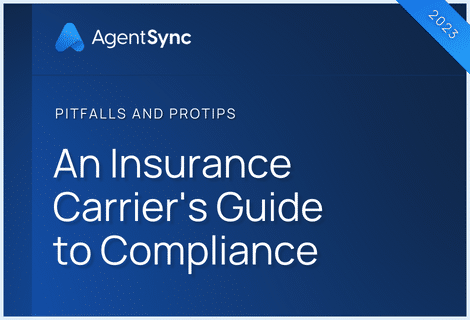

Insurance business ratings agencies, such as A.M. Best, Moody’s, Standard & Poor’s (S&P), and Fitch Ratings, are a somewhat underappreciated piece of keeping insurance companies solvent and protecting insurance consumers. This seems somewhat ironic since many consumers aren’t aware of what they are or what they do.
Before we jump in on the ratings process, elsewhere, we’ve looked at the function of guaranty associations within this system, and their role in providing a backup catch plan for any insolvent carriers that make it through the Swiss cheese model of insurance regulations. Be sure to look into the rest of our Solvency Series if you’re looking for information about keeping the sure in in-SURE-ance.
The insurance industry is largely state- and self-regulated, a system states and private businesses maintain through careful cooperation and safeguards that ensure consumer confidence. Every stakeholder is beholden to the principle that the long-term health and success of the insurance industry lies in maintaining the faith of insurance contract holders that their covered claims will be paid.
Yet, communicating this assurance to consumers is no small feat. Most of us don’t even read the simplest terms of service online, let alone reading and understanding our full insurance contracts, or researching and understanding key data points about the financial viability of the insurer posing the contract.
Ratings agencies make it simple for consumers to understand insurer financial strength and judge for themselves whether their contract is likely to be fulfilled, even without highly technical knowledge regarding insurance.

Ratings agencies’ review process
While states audit insurers to make sure they stay solvent and catch any troubles before they happen, private credit ratings agencies also audit insurers and give them a public grade. For a fee, Moody’s, A.M. Best, Fitch, S&P, and other similar services will rate agencies and give them a grade that they can either tout as proof of their excellence, or that they can work to improve.
Generally, how it works: A carrier contacts a rating agency to request either a public review or a private audit. The rating agency will ask the carrier for their audit information, essentially the same information the insurers have to send to the state to pass their review, as well. Often, the rating agency will include a series of phone calls between the company executives and the agency auditors to clarify any confusion, collect other necessary details, or dig deeper into the information the carrier has presented.
At the end of the review process and any follow up meetings, the rating agency will provide a score. Often, a newer carrier will ask that their first review be nonpublic – if the rating isn’t favorable, then a carrier will want the opportunity to improve before making the information public. And improvement is in everyone’s favor!
The rating agencies generally also provide a series of consultations to elaborate on why they scored a business the way they did, and to give pointers on ways the insurer can better their score. Hopefully, this practice allows carriers an organic way to improve their practices without ever needing state interventions.
Public reviews are when carriers not only pay for a ratings agency to give them a review, but to make the report public. Getting a strong rating is a bragging point – strong ratings are public evidence that an insurance carrier is operating in the black, with policies and contracts that aren’t outlandish or putting the carrier and its policyholders at risk. Companies that have favorable ratings usually make them a central part of their marketing, giving consumers confidence that their trust is well-placed.
Understanding insurer financial strength rating criteria
The five most-recognized ratings agencies each use slightly different criteria to evaluate insurance financial strength, but there are a few commonalities:
- Quantitative data will be, generally, the same as the criteria the state audits – balance sheet, reinsurance, and reserve cash on hand, etc.
- Additional considerations may include more qualitative information, like a parent company that could extend credit, a modern comprehensive tech stack, compliance history, or strong downstream sales relationships.
- Carrier financial strength reviews are forward-facing. They rely heavily on the plan moving forward, so business strategies and marketing funnels are part of the analysis.
- Although profitability is a factor in the insurance credit ratings system, all ratings are fundamentally a reflection of a single thing: the rating agency’s belief in a carrier’s ability to pay its claims.
Ratings agencies generally grade like a report card, but due to the nature of insurance funding and the stringent requirements an insurance carrier must follow, most ratings agencies have several A categories and several B categories, and anything that is falling below “C” is likely already beginning the state process of receivership and liquidation.
Insurance carrier strength ratings limitations
Carrier credit ratings are entirely voluntary – while most carriers get a rating by at least one agency, there is no requirement that they do so. Also, ratings are based on the situation as it stands today looking into the future. There are no guarantees. World or regional events, upstream or downstream business failures, or any number of unaccounted-for factors could affect the financial viability of an insurance business after they have received a rating.
One carrier may have many subsidiaries for different states or lines of authority, and each may have its own rating, which will also be different from the parent company’s credit rating. Not confusing. At. All.
Some insurance carriers request a rating review annually to keep their score fresh and publicly display their willingness to commit to transparency. Others request reviews from multiple ratings agencies, and then only publicize the most favorable rating.
That brings us to one of the trickier aspects of ratings – they are notoriously difficult to compare. For one thing, different agencies give a different weight to certain criteria. For another, each ratings agency has a different way of indicating excellence, and not all “As” are equal.
If you’re interested in digging deeper into this, The Balance Small Business has an excellent chart comparing the meanings of the different ratings used by the top agencies.
And, all of this is limited in meaning to consumers because, as stated before, a rating is about how capable an insurance carrier is of covering its claims, not a statement of how likely it actually is to do so, or how painless it makes that process.
So, before you see an “A” and decide that’s good enough, you’ll want to understand which rating agency gave that score, and what it actually means.
Ratings agencies and their role in maintaining carrier solvency
While the credit ratings agencies assign to insurance carriers are not a perfect metric, without them, consumers wouldn’t have any way to reasonably assess the strength of their contracts’ guarantees.
A four-star rating and feedback ranked on online consumer feedback sites may tell you about the customer service and other relevant metrics of a carrier, but they can’t tell you whether a carrier has a history of overleveraging themselves by signing too many high-risk contracts.
These ratings are meant to be a key part of the buying process for a reason – if a contract from a poorly rated carrier sounds too good to be true, it likely is.
At AgentSync, checking your solvency isn’t our role. But we subsidize your solvency by saving you money in unnecessary appointments, maximizing your producers’ speed-to-revenue, minimizing your producer licensing risks, and giving you innovative insights into producer data. Check out our demos to see how.
Ratings Agencies FAQs
Are there other ways besides ratings agencies to check out a carrier’s history?
A good old fashioned internet search will probably be a good bet for checking company history, ratings information, any consumer ratings that are available, etc. The NAIC also has a handy tool to help identify the number of consumer complaints about an insurer, and there are some national claims databases where consumers can provide feedback and reviews. Otherwise, you’ll need to resort to the classic: individual state websites.
Can an insurer pay for a more favorable review?
The top ratings agencies are only as valuable as their reputation, so, while carriers pay to be reviewed, their payment will not influence the outcome of the review.
What are the criteria for an insurance ratings review?
Both objective information – number of claims, collateral and cash on hand – and subjective information – company reputation and leadership philosophy – are factors, and each ratings agency weights criteria differently. For questions on each agency’s specific criteria, visit their websites.

